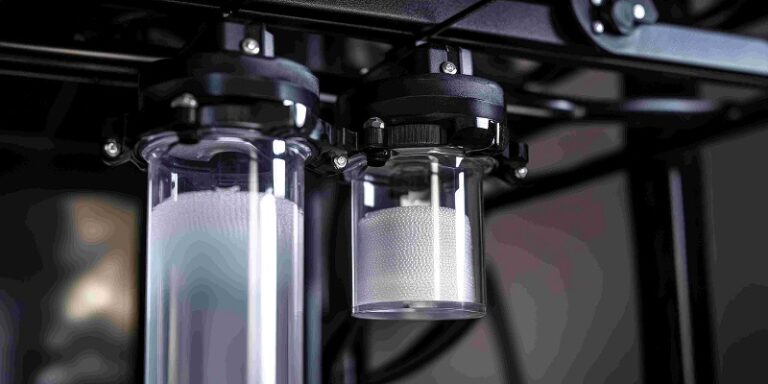Mugsy Jeans is making waves in sustainable fashion—but is the hype justified? The fashion industry is both a canvas for creativity and a colossal source of pollution. Each year, it generates 92 million tons of textile waste, consumes 79 trillion liters of water, and contributes around 10% of global carbon emissions. Amidst this environmental crisis, the slow fashion movement is gaining traction—pushing for thoughtful purchases, long-lasting clothing, and transparent sourcing. And in the world of men’s denim, one brand stands out for its comfort-first approach and sustainability claims: Mugsy Jeans. But are Mugsy Jeans truly part of the solution, or are they just stylish passengers on the green marketing train?
What Is Slow Fashion and Where Does Mugsy Jeans Fit?
Slow fashion is about more than ditching trends—it’s a philosophy of buying less and choosing better. Founded in 2016 in Chicago, Mugsy Jeans markets its denim as soft, stretchy, and suitable for daily wear. With fits like Classic, Slim, Relaxed, and Bootcut, the brand appeals to a broad spectrum of body types, especially athletic builds. Customers regularly praise their jeans as wardrobe staples—reliable, versatile, and comfy enough to replace sweatpants.
But comfort alone doesn’t define slow fashion. Durability does. While many fans report years of wear from their Mugsys, others note issues like seam splits and crotch holes after a year or less—an alarming drawback at a $98 price point. Compared to the 81 pounds of clothing discarded annually by the average American, long-lasting jeans could help cut waste significantly. For Mugsy to fully live up to slow fashion standards, it needs to prove consistent durability across its product line.
You may like to know : What is fast fashion?
Recycled Materials: Mugsy Jeans’ Eco-Friendly Fabric Approach
Mugsy Jeans is setting an example in both fabric and packaging innovation through the smart use of recycled materials. Let’s break it down further.
Fabric Sustainability: Beyond Conventional Cotton
One of the most impressive aspects of Mugsy Jeans is its use of recycled materials. Currently, 80% of their fabrics and packaging are made from recycled sources. That’s a big deal in an industry where only 15% of textiles are recycled in the U.S. Using recycled cotton and polyester skips the resource-heavy processes of growing new cotton or producing synthetic fibers from oil.
To put it in perspective:
- Recycled cotton uses about 700 fewer gallons of water per kilogram than conventional cotton.
- Recycled polyester reduces dependence on fossil fuels and lowers CO₂ emissions compared to virgin synthetic fibers.
Mugsy aims to hit 100% recycled fibers by 2025—a bold and admirable goal. However, details remain sparse. Where do these materials come from? Are they certified by reputable organizations like the Global Recycled Standard (GRS) or OEKO-TEX? Greater transparency would build more consumer trust.
Tip: Look for certifications like GRS, OEKO-TEX, or Bluesign when shopping for sustainable denim. These labels ensure responsible sourcing and manufacturing.
Eco-Packaging in Fashion: Lessons from Mugsy Jeans’ Shipping Practices
Packaging is fashion’s silent polluter, but Mugsy Jeans is rewriting the script with 80% recycled materials in their shipping materials.
Why this matters:
- Plastic waste: 8 million metric tons of plastic end up in oceans yearly (IUCN).
- Paper waste: Paper-based packaging contributes to 10% of global tree loss (WWF).
Using recycled packaging cuts demand for virgin materials. One recycled cardboard box can save 17 trees, and recycled plastic reduces oil extraction.
How Mugsy Jeans Compares on Packaging
While many big-name brands like Zara or H&M have only recently pledged to adopt recycled packaging, smaller brands like Mugsy move faster, unburdened by bureaucracy. Still, there’s room for improvement—100% recycled or even biodegradable options are available.
Ideas other brands (and Mugsy) can adopt:
- Source post-consumer packaging waste
- Partner with companies like TerraCycle
- Use compostable mailers for online orders
Consumer Role in Reducing Packaging Waste
Mugsy Jeans proves small shifts matter. But progress doesn’t stop with the brand—consumers play a role too. Choosing brands that use eco-packaging and recycling shipping materials at home is a simple but powerful way to chip away at fashion’s waste mountain.
Water Usage: Is Mugsy Jeans Helping Save the Planet?
Jeans are notoriously water-intensive. Producing a single pair can use up to 1,800 gallons of water, primarily from cotton irrigation and dyeing. With 2.7 billion people experiencing water scarcity globally, this is no small concern.
Mugsy’s use of recycled cotton likely reduces their water footprint significantly—recycled blends can cut water consumption by up to 50%. Still, the company hasn’t released specific figures. Do they use water-saving techniques like ozone washing or laser distressing? If they do, they should say so. Transparency around their manufacturing process could solidify their role in a more sustainable fashion future.
Stretch Jeans: Comfort vs. Planet
Mugsy’s signature comfort comes from a blend of 68% cotton, 19% rayon, 11% polyester, and 2% spandex. Their use of Lycra T-400 fabric enhances stretch and durability—ideal for everyday wear. However, synthetic fibers like polyester and spandex are far from perfect. They emit two to three times more carbon than cotton during production and shed microplastics every time you wash them.
That said, Mugsy’s recycled polyester (assuming it comes from post-consumer sources like PET bottles) helps reduce the impact. Biodegradable alternatives to spandex are emerging—brands embracing those would score extra green points. For now, Mugsy users can reduce their microplastic output by washing jeans less often and using cold water.
Direct-to-Consumer: A Greener Way to Shop?
Mugsy Jeans sells exclusively online through a direct-to-consumer (DTC) model. This approach helps curb overproduction—a chronic fast fashion problem where 30% of items often go unsold. With fewer intermediaries and better demand forecasting, Mugsy can produce more efficiently and reduce waste.
They also offer free U.S. shipping and a 60-day return policy. While convenient, returns contribute to carbon emissions—an often overlooked downside of e-commerce. Mugsy could improve by offering local return drop-offs or offsetting return shipping emissions. Still, their lean, digital-first model supports slow fashion’s “less is more” mantra.
How Does Mugsy Jeans Compare to Other Sustainable Denim Brands?
Mugsy Jeans Pricing vs Other Popular Denim Brands
| Brand | Average Price (USD) | Stretch & Comfort | Sustainability Focus | Best For |
| Mugsy Jeans | $98–$118 | High | Recycled fabrics, eco-packaging | Everyday comfort, athletic builds |
| Levi’s | $60–$110 | Medium to High | Water<Less®, Better Cotton | Classic denim lovers |
| Everlane | $88–$128 | Medium | Transparent sourcing, organic cotton | Minimalist wardrobes |
| Nudie Jeans | $130–$180 | Medium | Organic cotton, free repairs | Eco-purists, European fit fans |
| Outland Denim | $150–$200 | Medium | Fair trade, ethical labor | Premium ethical buyers |
Tip: Mugsy Jeans strikes a balance between comfort and eco-focus at a mid-tier price—making them ideal for guys who want feel-good fashion without overspending.
When evaluating Mugsy Jeans against competitors like Levi’s, Everlane, Nudie Jeans, and Outland Denim, several differences emerge:
| Brand | Key Focus | Sustainability Claims | Comfort & Fit |
| Mugsy Jeans | Comfort, Recycled Blends | Aiming for 100% recycled materials by 2025 | Soft stretch fit for men |
| Levi’s | Water Conservation | Water<Less® technology; sourcing transparency | Classic denim feel |
| Everlane | Radical Transparency | Public cost breakdowns and factory disclosures | Tailored but traditional |
| Nudie Jeans | Full Lifecycle Programs | Organic cotton, repair services, take-back | European-style slim fits |
| Outland Denim | Ethical Manufacturing | Fair trade, living wages, minimal water usage | Durable but less stretch |
Mugsy leads in comfort but lags in third-party certification and full supply chain transparency compared to these slow fashion veterans.
How to Score the Best Deals on Mugsy Jeans
Looking to upgrade your denim without breaking the bank? Here are some tips to maximize your savings on Mugsy Jeans:
- Sign Up for the Newsletter: New subscribers often receive a 20% discount on their first order.
- Explore the ‘Last Call’ Sale: Mugsy’s ‘Last Call’ section features discounts up to 60% on select items, including jeans, joggers, and shorts.
- Utilize Promo Codes: Various coupon websites like RetailMeNot and Coupons.com frequently offer verified Mugsy promo codes, providing discounts ranging from 10% to 35%.
- Enjoy Free Shipping and Returns: Mugsy offers complimentary standard shipping and returns on all U.S. orders, adding extra value to your purchase.
Tip: Stacking these deals—such as combining a promo code with a sale item—can lead to significant savings.
Pros and Cons of Mugsy Jeans’ Sustainability Efforts
Mugsy Jeans shows genuine potential as a slow fashion brand. Their use of recycled materials, commitment to comfort and fit, and streamlined sales model are all commendable. If they hit their 2025 goal of 100% recycled fibers, they’ll set a strong industry precedent.
However, several gaps remain:
- No public sustainability report
- Lack of clarity on water-saving techniques
- No mention of certifications like GRS, OEKO-TEX, or Bluesign
- Use of synthetic fibers without biodegradable alternatives
- Mixed reports on product durability
To elevate their eco-image, Mugsy could join programs like Blue Jeans Go Green, which recycles denim into housing insulation. Or they could publish an annual sustainability report to show progress and goals.
FAQs About Mugsy Jeans
Are Mugsy Jeans really sustainable?
They’re making good progress with recycled materials and mindful production, but transparency and durability questions remain.
What fabrics are used in Mugsy Jeans?
Their denim includes a mix of cotton, rayon, polyester, and spandex—with many pieces incorporating recycled fibers.
How does Mugsy compare to other sustainable brands?
Unlike Levi’s (focused on water-saving tech) or Everlane (known for transparency), Mugsy emphasizes comfort and casual style.
Do Mugsy Jeans last a long time?
It depends. Some users report years of use, while others mention wear and tear after months. One reviewer noted, “They’re my go-to jeans for comfort, but I had to patch the crotch after 10 months.” Another praised the service: “Customer support made the return so easy—it made me want to keep buying from them.”
Are there greener alternatives to Mugsy?
Brands like Nudie Jeans or Outland Denim may offer more transparency or biodegradable materials, but might lack Mugsy’s stretch and comfort.
Final Thoughts: Is Mugsy Jeans a True Slow Fashion Brand?
Mugsy Jeans is a promising player in the slow fashion space. Their recycled materials, direct-to-consumer strategy, and everyday comfort show that style and sustainability don’t have to be mutually exclusive. Still, they’re not a perfect model—yet. To fully align with slow fashion values, Mugsy needs to be more open about its practices, durability, and impact.
As consumers, we can support progress by choosing quality over quantity and pushing brands to do better. If you’ve tried Mugsy Jeans, share your thoughts below—how long have they lasted for you? Have they lived up to their comfy, eco-friendly promise? Let’s wear change, one pair of jeans at a time.
Image Source : instagram






